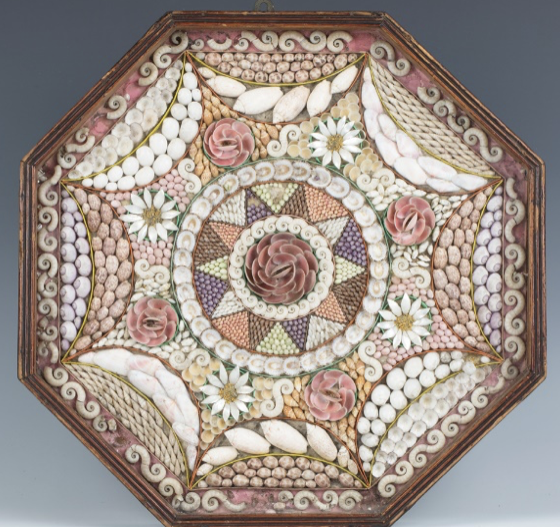Jules Bourbeau ’25
A&E Editor
With no access to cellphones, the internet, or even a postal service, the 19th century men working on fishing and trading vessels needed to find another way to make sure that they occupied space in the minds of their loved ones at home. To accomplish this, they used sailor’s valentines: small octagonal boxes or frames filled in with a mosaic of tiny seashells. The intricate designs were typically geometric in nature, but some featured messages or images, with hearts and flowers being popular motifs. They are truly extraordinary works of art, with their soft yet eye-catching colors and minuscule shells packed into every square inch.

Today, you can find reproductions for sale in seaside knick-knack shops, especially on Nantucket. The genuine artifacts from the nineteenth century fetch quite a high price and are significantly more difficult to find. In all my years of perusing antique stores across New England, I have yet to see one myself. I became interested in the artform because the idea of a grizzled seaman painstakingly gathering shells off the beach and sticking them in elaborate patterns as a show of dedication to someone back home roused my curiosity. I could imagine his calloused hands forming cockles into carnations, betraying his tough exterior out of a desire to create something that someone else may find beautiful.
Unfortunately, the reality is quite a bit less romantic, but, as is often the case with history, just as interesting. While it is likely that some sailors’ valentines were created by the sailors themselves, most of them were simply purchased as souvenirs—much like they are today. One clue pointing towards this fact is that most of the shells used in the craft are from species of mollusk originating in the West Indies. This is not entirely unusual, considering that the sailors would indeed have frequently stopped in the region, but wouldn’t one expect to find a whole host of worldwide shells considering the scope of the sailors’ journeys? The truth is, most sailors’ valentines were actually made by women from Barbados, which just so happened to be the last stop before home on many voyages returning to New England. Essentially, sailors would buy sailors’ valentines from these talented women as a last-minute gift.
Despite having had my fantasies crushed, I decided to try my hand at making my own sailors’ valentine anyways. However, as a college student in Hartford and not a 19th century sailor, I would need to resort to a less adventurous source of shells: the Michael’s in East Hartford. It was there that I also acquired the frame, which was hexagonal rather than octagonal, but I had thrown historical accuracy out the window the moment that a chain craft supply store got involved.
Over the course of the next week, I sorted out and arranged my shells until I had completely filled the frame. I estimate that I used about 150 individual shells, ranging from nautilus-like spirals to long, thin cones. While my final product may not be as colorful or intricate as my inspirations, it does have something that the originals do not: it was made with its recipient in mind.






+ There are no comments
Add yours